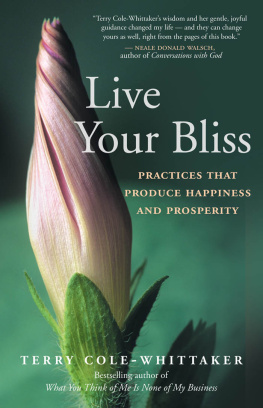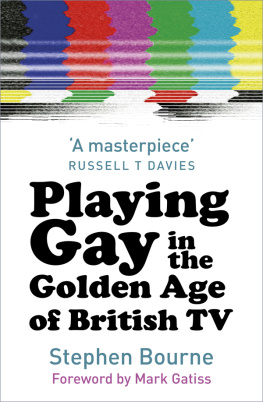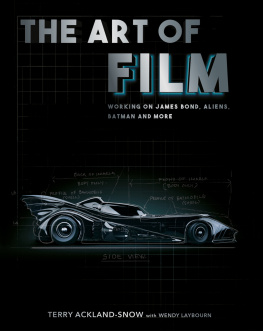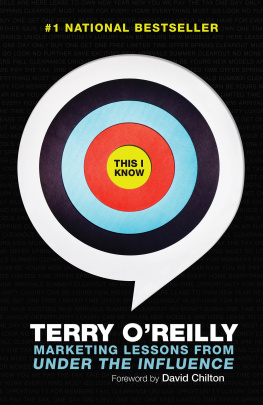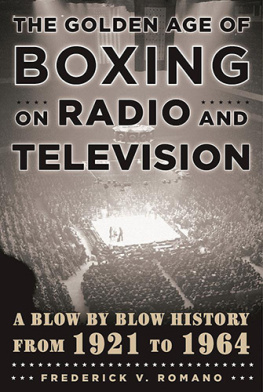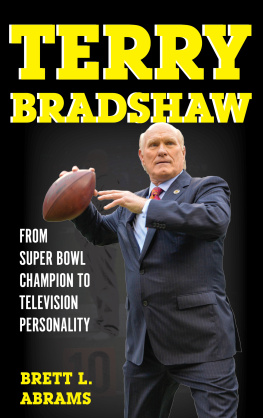THE GOLDEN AGE OF BOSTON TELEVISION
TERRY ANN KNOPF
UNIVERSITY PRESS OF NEW ENGLAND
HANOVER AND LONDON
University Press of New England
www.upne.com
2017 University Press of New England
All rights reserved
EBOOK ISBN: 978-1-5126-0104-6
For permission to reproduce any of the material in this book, contact Permissions, University Press of New England, One Court Street, Suite 250, Lebanon NH 03766; or visit www.upne.com
Library of Congress Cataloging-in-Publication Data
available upon request
To SARAH-ANN SHAW
who gave so much and paved the way
for so many others
In 1978, I threw my television set out a second-story window. When I went to retrieve it, it sported a third-degree crack across the screenbut it still worked. That was when I knew: Television is forever, or at least televisions are.
Linda Ellerbee
CONTENTS
ACKNOWLEDGMENTS
One of the joys of writing this book involved reconnecting with many of those who participated in Bostons Golden Age of local televisionformer players whom I had the privilege and pleasure of covering as a TV critic. Even after all these years, they gave generously of their time to reminisce, fill in the blanks, and provide perspective on a little-known but eventful time in Bostons history. Sadly, Bob Bennett, Channel 5s former general manager and a broadcast visionary, died in November of 2016 at the age of eighty-nine. But as fate would have it, I had the good fortune to interview him some months earlier by phone. He and his wife Marjie had just returned from Mexico after a monthlong sailing trip on their yacht. Indeed, he seemed in fine form as we exchanged stories about the good old days. At one point, he confirmed an industry rumor that ABC executives had prevailed on him to drop the name of Good Morning!, his popular local talk show, as they prepared to introduce a new show to compete with NBCs Todaywhich is how Bostons Good Morning! came to be renamed Good Day!, and how ABC in 1975 launched a new show called Good Morning America.
Martha Raddatz (then Martha Bradlee) went from Channel 5s chief correspondent in the 1980s to Pentagon correspondent at National Public Radio from 1993 to 1998, then joined ABC News in 1999 as a State Department correspondent. Since that time, she has enjoyed a meteoric rise at the networkmost recently appointed Chief Global Affairs Correspondent and cohost with George Stephanopoulos on This Week. Somehow, she managed to find the time to trade emails with me about her earlier days in Boston. It was a measure of the markets ambitions that she (and other reporters as well) traveled abroad, covering events in such places as Geneva (for the first Reagan-Gorbachev Summit), Ethiopia, the Philippines, and Lebanon. I think everything I did in local TV helped me be a better reporter for the network, she said.
Similarly, I had several delightful conversations with Tom Ellis, Bostons first superstar anchor. Now in his eighties and living a comfortable retirement with his wife Arlene on Cape Cod, he seemed genuinely happy to revisit the past, despite having been the target of merciless press criticism. Asked why he was willing to speak to one of his critics after so many years, he replied cheerfully: My mother told me always to be a gentleman. Texas Tom had the good sense to ignore us all, and laugh all the way to the bank.
I also made a nostalgic trip to visit Sonya Hamlin at her vacation home in the Berkshires. A formidable presence on the Boston TV scene for nearly twenty years, she was best known as a cultural reporter for Channel 4s Eyewitness Newsthe first in the countryand later the host of a cutting-edge talk show. There were so many facets to her astonishing careerMartha Graham dancer, chairman of Radcliffe and Harvards dance department, talk-show host, business and communications consultant, lecturer, blogger, author of five bookseven acting with Tina Packers Shakespeare & Company.
Still, she had an unhappy memory of the time in the 1970s when the Sonya Hamlin Show was abruptly canceled. At the time, her station played it cute, announcing to the press that the decision was her own. Beneath a Boston Globe headline that read Sonya Hamlin Quitting Her TV Talk Show, her general manager, Sy Yanoff, said: She has made her mark in Boston television and her departure will be felt deeply. Even Sonya played along, saying she had come to a standing still place in her life and it was time for me to move on.
The reality was quite different, she explained forty years later, and brutal in the way only the television industry can be. Coming on the eve of the fifth anniversary of her talk show, she recalled a five-minute meeting with Yanoff on a Monday, who told her she was to be out the door that Friday. Despite her best efforts, the tears flowed on camera during her final show. I still have the tape, she said wistfully.
So many others to thank as well: Caryl Rivers, my dear friend and Boston University journalism colleague who functioned as an informal editor and invaluable sounding board; Emily Rooney, with whom I jousted so many times when she was a Channel 5 news director, but who could not have been more helpful to me in researching this book; former Channel 4 program executive Francine Achbar, who provided invaluable assistance in tracking down people who had disappeared from the Boston market (by the way, in those days we jousted a lot as well); Jim Byrne, who worked at four Boston stations, sharing his knowledge of the independent stations, and who constantly inspires me with his decency in a tough business; and longtime Boston friends Marianne Perlak and Diana Morse, who provided useful feedback on different chapters.
I am also indebted to the dedicated and good-natured reference librarians at the Washington Street branch of the Brookline Public Library and the Thomas Crane Public Library in Quincy, Massachusetts (especially Theresa Tangney), who put up with my incessant, picky, and annoying questions. Also, let me not forget Sophie, my beloved Maine Coonsurely the worlds most adorable catwho charmed and calmed me with her sweetness during moments of writers block. I especially wish to thank Phyllis Deutsch, the editor in chief of the University Press of New England and her superb editorial and production staff. Phyllis had the vision to see that this book was not only an untold story about a fascinating period in television but also a sociocultural and political history of Boston told through the prism of local television. Besides, she turned me on to The Americans, one of her favorite television shows, to which I am now addicted. (Once an addict...)
Finally, I remain eternally grateful to Philip Meyer, professor emeritus in journalism at the University of North Carolina, a pioneer in communications technology, polling, and citizen journalism as an executive with Knight Ridderand the person most responsible for my getting my first job as a TV critic at the Miami Herald.
INTRODUCTION
Since the early days of television, when Howdy Doody, Ozzie and Harriet, Uncle Miltie, and Perry Mason had become household names, much has been written about the wondrous, complex, much-maligned, and often misunderstood medium of televisionits history, its power, its stars, its alleged evils versus its many benefits, and its impact on our culture. By comparison, however, little attention has been given to the importance of local television, especially when it comes to how people get their news. In March 2015, the Pew Research Study Center, in association with the John S. and James L. Knight Foundation, published a lengthy report called Local News in the Digital Age, which contained some startling findings. Analyzing the news environments in three disparate citiesDenver, Colorado; Sioux City, Iowa; and Macon, Georgiathe researchers found that:




